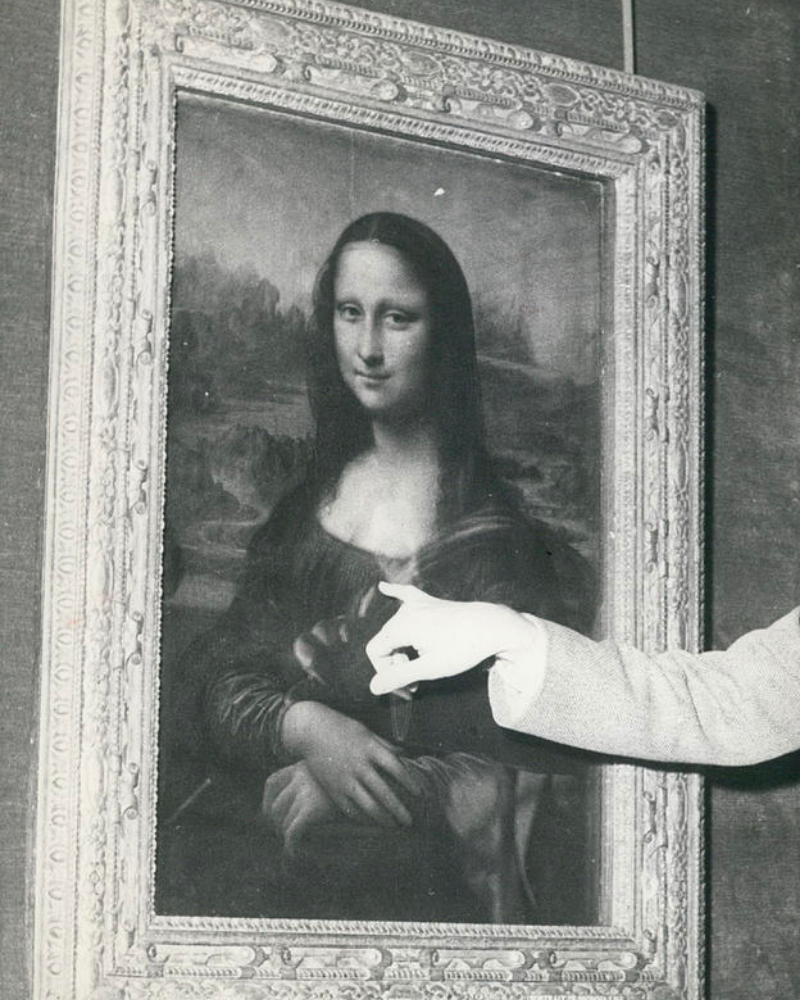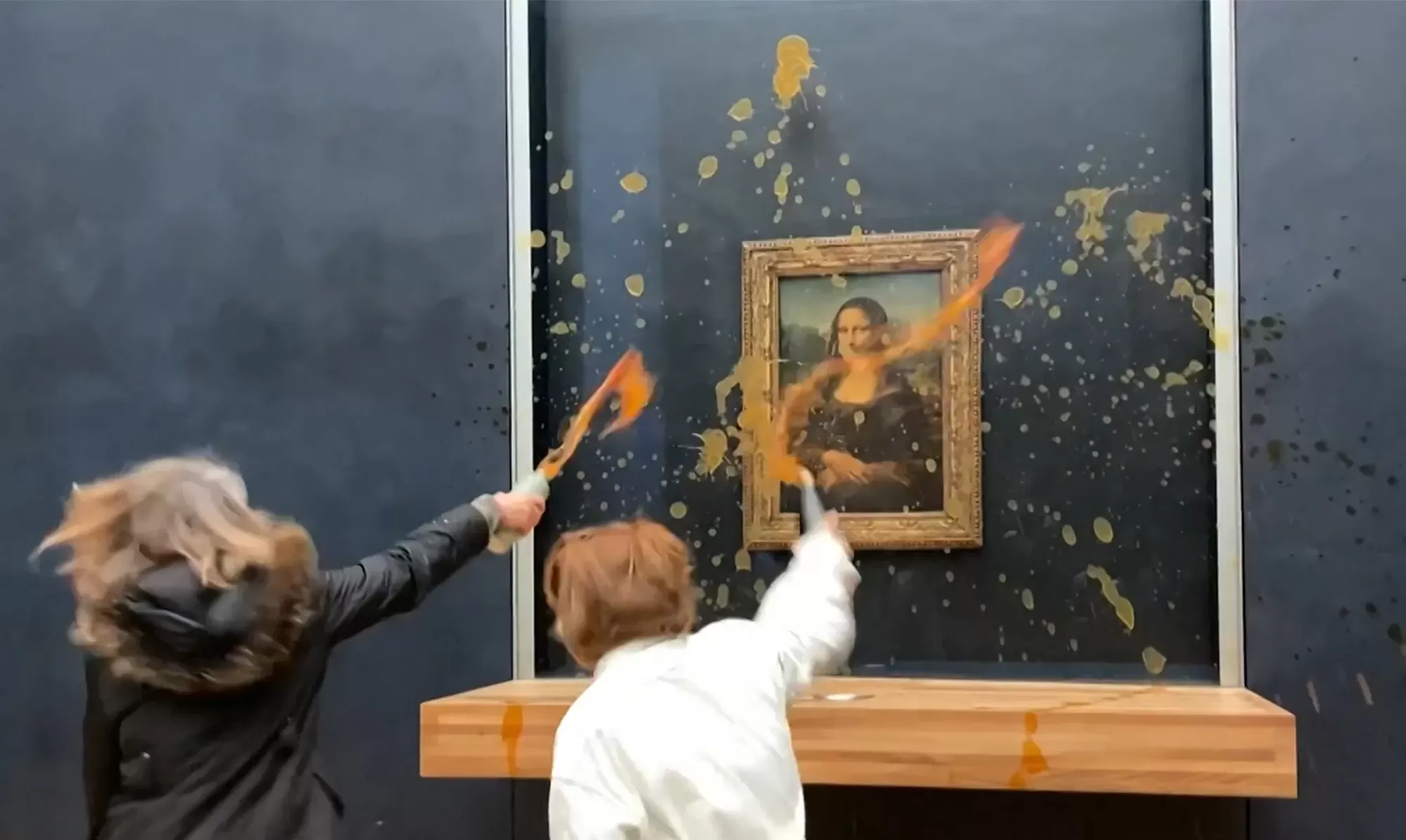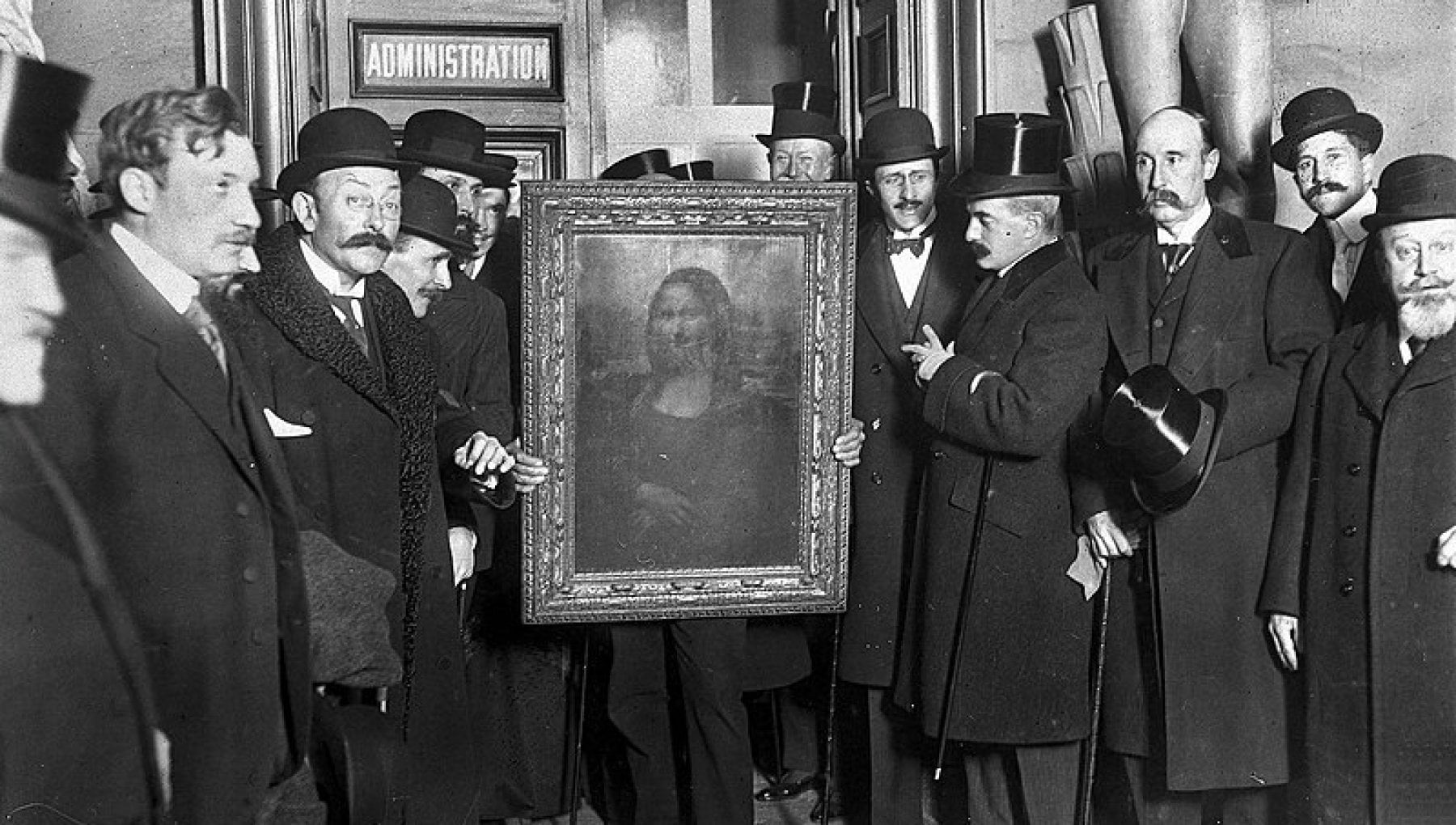
The tumultuous life of the Mona Lisa From 1911 to 2024: the history of the many attacks on the world's most famous painting
It is often thought that the daily life of works of art is monotonous, but here is one that has seen its fair share of ups and downs. Since last weekend, the Mona Lisa has been at the center of all conversations. Although it is one of the most protected works in the world, it continues to face, quite literally, various attacks from detractors, fanatics, and activists from all corners of the globe. On Sunday, January 28th, the famous painting by Leonardo da Vinci from 1503 featuring Mona Lisa was once again a victim of an attack. A part of history that could have vanished due to a few liters of soup, much to the amusement of internet users. Fortunately, this episode made more noise than harm, compared to others that could have been fatal. Since its famous theft in 1911, an event that greatly contributed to its current fame, the world's most precious painting, estimated between 1 and 2 billion euros, has been the target of regular attacks. Here are some that can be considered particularly noteworthy.
1956: A young man damages Mona Lisa's left elbow by throwing a stone at the painting
In 1956, the Mona Lisa experienced two disturbing episodes that shook its tranquility. In the first act, an individual threw acid paint on the canvas, causing significant damage to the artwork. Then, a few months later, on December 30, 1956, a young Bolivian who had recently settled in France threw a stone at the painting. It was an act of protest against the state since he had been denied permanent residency. The projectile shattered the protective glass, causing shards that damaged Mona Lisa's left arm, requiring subsequent restoration. In response to these acts of vandalism, enhanced protective measures were put in place. Now, the Mona Lisa resides in a secure case, benefiting from additional protection with a bulletproof display case to prevent any risk of future degradation. These events emphasized the need to strengthen security around this iconic masterpiece, demonstrating that even art is not immune to the vagaries of time and human actions.
1974: A woman attacks the painting with a red spray during its exhibition at the National Museum of Tokyo
Despite previous trials, the Mona Lisa continued its world tour, lending its charm to various exhibitions, including the one held in Tokyo in 1974. However, the event took an unexpected turn when a wheelchair-bound visitor decided to make her voice heard. In the midst of the Tokyo exhibition, this woman chose Mona Lisa as the canvas for her claims, launching a splash of red paint towards the artwork. Her bold gesture aimed to draw attention to the lack of access ramps for people with disabilities in the museum. Although the substance did not touch the precious canvas, the incident resonated in the accessibility debate, highlighting the challenges faced by people with disabilities when exploring cultural venues.
2009: A Russian visitor armed with a mug throws her projectile at the protective glass, leaving a slight impact mark
In 2005, a new era of protection was inaugurated for the Mona Lisa, with a colossal investment of 5 million euros dedicated to its security. The icon by Leonardo da Vinci was enveloped in a modern shield, an imposing bulletproof glass measuring four meters in height and two meters in width, creating an impassable barrier between the artwork and potential acts of vandalism. This precaution proved its utility during an incident in August 2009 at the Louvre. A woman, originally from Russia and frustrated by not obtaining French nationality, decided to express her discontent in a rather unexpected way. She threw an empty cup towards the Mona Lisa, a gesture filled with despair and protest. The tableware violently hit the bulletproof glass, leaving a slight scratch as a testament to the act of frustration. Fortunately, thanks to this enhanced protection, the Mona Lisa emerged unscathed from this symbolic new attack.
2022: A man attempts to pie the Mona Lisa with a cream pie in the name of the environmental cause
On May 29, 2022, the Mona Lisa became the target of a surprising and unprecedented scene. A young man, disguised as an old lady and presenting himself as a fervent advocate for the environmental cause, targeted the artwork with a cream pie. Unveiling a bewildering performance, he rose from his wheelchair, dressed from head to toe with a wig and a cap. Beyond the bizarre aspect, his gesture was accompanied by a passionate appeal in favor of planet protection. "There are people who are destroying the Earth (...) All artists, think about the Earth. That's why I did this," he declared, thus invoking an act of artistic protest. His cream pie throw and attempt to break the protective glass of the canvas created a moment of intrigue and confusion within the museum.
2024: Two environmental activists splash soup on the Mona Lisa
The latest attack on the Mona Lisa took place yesterday, January 28, 2024, orchestrated by two environmental activists. In a bold and irreverent gesture, they splashed the masterpiece by Leonardo da Vinci with soup, much to the surprise of visitors. Wearing T-shirts displaying the logo of the environmental collective "Food Response," the activists took advantage of the media attention to display their message: "What is more important? Art or the right to healthy and sustainable food?" Through this staging, they highlighted crucial issues related to hunger and food sustainability, vehemently denouncing the shortcomings of the current agricultural system. A situation that, however, was managed by the Louvre staff with remarkable composure, demonstrating the implementation of a well-established protocol. Despite the efforts of the Louvre to protect it, it is evident that the Mona Lisa continues to serve as an outlet. Its iconic status has made it an involuntary muse for various protests, highlighting art's ability to transcend its own framework and become a platform for expression and change. Hoping that the next activists will be a bit more respectful.

















































